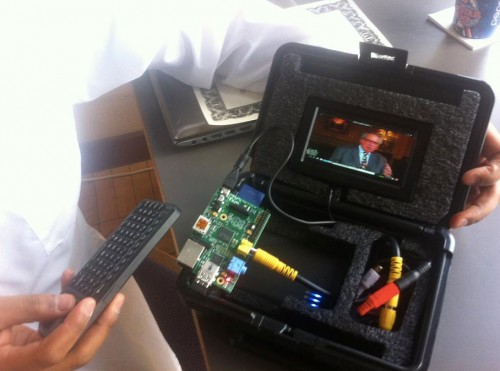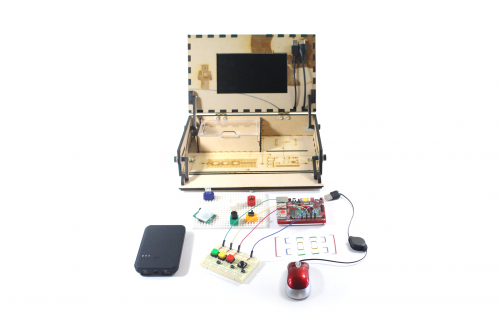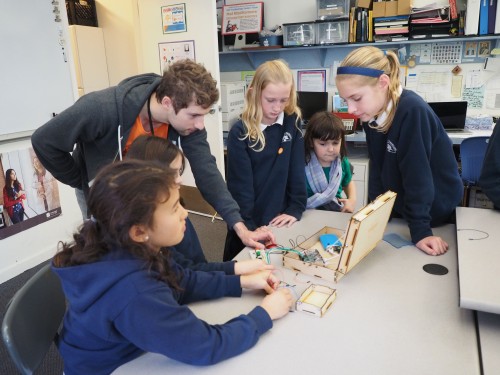| At Raspberry Pi, we’re interested in many of the different ways that computers and education converge. To hear more about a new approach, I’ve invited Mark Pavlyukovskyy to write about his project, Piper, which you can find on Kickstarter now. Here’s Mark: I was a junior in college when I first heard about the Raspberry Pi. It seemed miraculous that you could have a full Linux board, that could run off of your phone charger, that cost only $35. While I imagined hundreds of different projects that I would want to make with the Pi, I realized that at such a low price point, the board would be perfect for giving kids in all over the world a way to hack and play with technology. It could democratize who had access to creating with technology.
My first project was to add peripherals like screens and keyboards to the Pi and send these cheap mini-computers to Africa and India for kids to learn about computer hardware and software. Today you can be a software developer from anywhere in the world, and I wanted to use the Pi to serve as an interactive instruction manual to let anyone get started with programming. Not only was it logistically difficult to ship dozens of black boxes with wires and electronics to different countries, but the biggest challenge was actually getting kids interested. For the majority of the students we worked with, the interface or the games we made didn’t interest them as much as putting together the pieces and seeing a working computer as a result of their efforts. We went back to the drawing board to figure out a way to let kids not only build a computer, but to continue building and creating; to spark their curiosity and show them that they could build real things themselves. After doing dozens of workshops with schools back in the US, we found the hook that would get kids interested – Minecraft. Minecraft is a virtual building blocks game that allows kids (and adults) to create anything they want in virtual reality; even if that anything is virtual replicas of Hogwarts, the Starship from Star Wars, or the city of Beijing. And luckily for us, the Pi had a version of Minecraft that we could modify with Python. The other beauty of the Pi was the GPIO pins. These programmable input/output pins allowed us to create a modified Minecraft that kids could alter by adding their own hardware and electronics to the Pi. We could modify the game, so that once kids built the correct hardware and connected it to the pins on the Pi, the Minecraft would react in some way.
We designed and created a storyline, where you were sending a robot to a different planet, and on the way over, his hardware was damaged, so you had to repair his hardware on the Raspberry Pi right in front of you in order to advance through the levels. In each level of the game you would have to physically build a power-up, such as a button, a switch, a row of LED lights, and these power-ups would give an advantage in the game. The switch for example opens hidden doors, while the row of LEDs serves as a proximity sensor for finding diamonds, so the closer you are to diamonds, the more lights light up.
And as we started showing this to kids, we couldn't get them to stop playing. It was really amazing how interested kids were in both the Minecraft and the hardware. For many, they had played regular Minecraft, and were fans, but modifying it by adding your own real gadgets was a novel concept, and excited them. Many kids had never built anything physical prior to Piper, and they got excited because it showed them that the in-game possibilities were endless. We are currently creating a sandbox platform that will allow players to make their own levels and add custom hardware, and then share their creations with friends. Because as kids see the endless possibilities of what they can create in the game with Piper, we know that they will remember these lessons, and eventually see the whole world around them as full of possibilities which they can create and invent. We want Piper to inspire an entire generation to believe that they are superheroes not just in the virtual world, but in the real world too. Not to see technology as a black box that works on magic, but as something anyone can remix and create. And together with the incredible community of Raspberry Pi enthusiasts like you, we can bring this vision to life! Please join us in bringing Piper to inventors and creators all over the world! |
A Semi-automated Technology Roundup Provided by Linebaugh Public Library IT Staff | techblog.linebaugh.org
Friday, March 20, 2015
Piper: Learning electronics with Minecraft
Subscribe to:
Post Comments (Atom)



No comments:
Post a Comment